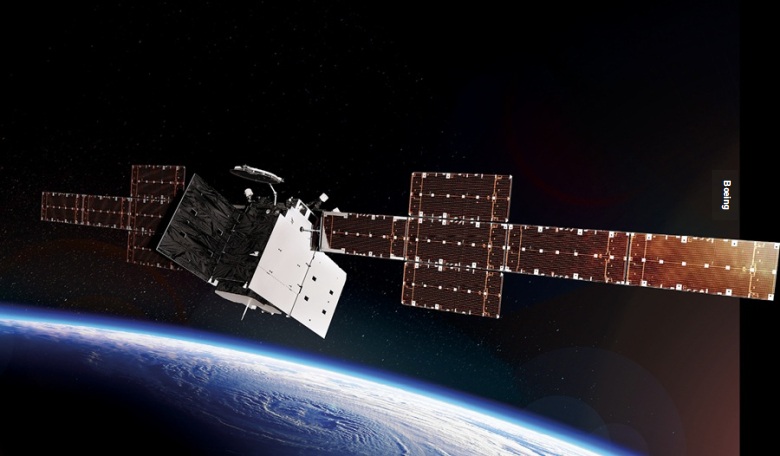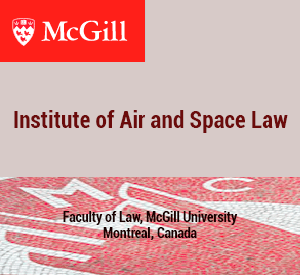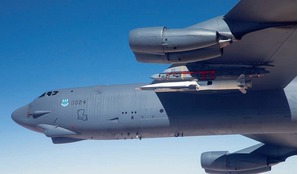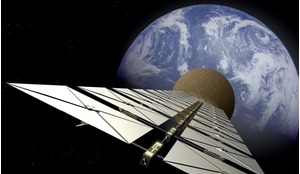Whether designed for communications, positioning, navigation and timing (PNT) or remote sensing, a satellite’s mission dictates critical decisions regarding size, structure, power supply, sensor payloads and orbital configurations. In this article, the author reviews the applications of these engineering creations and the developments in technology that enable our orbiting infrastructure.
Demand for secure, high-speed global connectivity, precise location services and high-resolution Earth observation continues to increase, driving significant advancements in satellite technology. With increasing global interest and commercialisation of space, there has been a shift in approach involving the deployment of low Earth orbit (LEO) constellations. Increasingly, the industry is relying on these smaller, networked systems that provide persistent coverage and resilience. This growth is not without challenges and satellite developers must overcome spectrum management and system integration hurdles, regardless of the type of satellite they are developing.
The transformation of the satellite industry over the past decade has been remarkable. Where once missions were dominated by large, expensive satellites with decades-long development cycles, today’s landscape features rapid deployment of smaller, more agile platforms. This shift has democratised access to space-based capabilities while creating new technical and operational challenges that require innovative solutions.
Spectrum wars and signal security
Satellite developers must overcome spectrum management and system integration hurdles, regardless of the type of satellite they are developing
The satellite communications market is expanding rapidly but faces significant challenges. Congestion and competition for radio-frequency (RF) spectrum in LEO and geostationary orbit (GEO) creates interference risks, while mega-constellations contribute to orbital congestion. The diversity of transmission requirements across various applications compounds these difficulties.
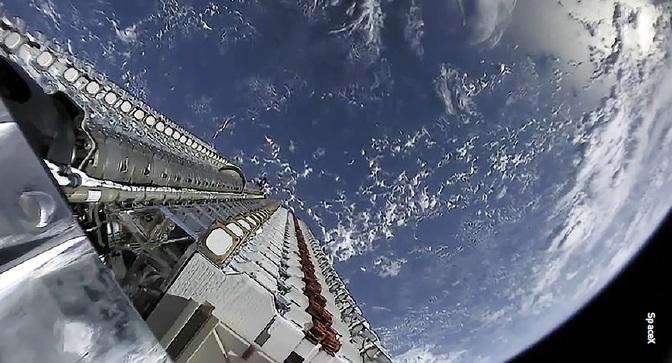 SpaceX s Starlink is currently the largest satellite constellation by far. Starlink satellites are launched in batches, deploying dozens into orbit at a time.
SpaceX s Starlink is currently the largest satellite constellation by far. Starlink satellites are launched in batches, deploying dozens into orbit at a time.
Communications satellites must navigate the complex RF environment while maintaining signal quality and minimising interference. Modern satcom systems require sophisticated antenna designs, advanced signal processing capabilities and intelligent frequency management to operate effectively in increasingly crowded orbital environments. The shift towards higher frequency bands, including Ka-band and V-band, offers increased bandwidth but introduces new technical challenges related to atmospheric attenuation and component complexity.
Meanwhile, the emergence of high-throughput satellites (HTS) has revolutionised the communications landscape, delivering significantly more capacity than traditional fixed-beam satellites. These platforms employ spot beam technology and frequency reuse techniques to maximise spectral efficiency, enabling cost-effective broadband services across diverse geographic regions.
However, the complexity of HTS systems requires sophisticated network management and interference mitigation strategies.
Similarly, PNT satellites face mounting security challenges. Traditional GPS and other GNSS systems are vulnerable to jamming and spoofing attacks that can disrupt critical infrastructure and military operations. The development of resilient PNT architectures has become a national security priority, with emphasis on multi-constellation approaches, enhanced signal authentication and alternative navigation technologies.
For example, PNT systems increasingly rely on multiple signal types and authentication mechanisms to ensure service reliability. However, the integration of civilian and military signals on the same platforms creates complex design challenges, requiring careful consideration of power allocation, antenna design and signal processing capabilities. The emergence of commercial PNT services is also creating new opportunities for precision applications across agriculture, transportation and surveying.
Interestingly, the integration of communications and PNT capabilities into unified platforms is driving innovation in satellite design. These dual-purpose systems must balance competing requirements for power, antenna configurations and orbital characteristics while maintaining the reliability and precision demanded by both mission types. Luckily, the trend towards software-defined payloads enables greater flexibility and adaptability, allowing operators to reconfigure systems in response to changing requirements or emerging threats.
Precision intelligence from space
The transformation of the satellite industry over the past decade has been remarkable
Earth observation satellites represent perhaps the most rapidly evolving segment of the satellite industry. Advances in sensor technology, data processing and artificial intelligence (AI) are revolutionising how we monitor and understand our planet. Remote sensing platforms can detect changes in vegetation health, track urban development and monitor natural disasters, providing critical intelligence for both commercial and defence applications.
The miniaturisation of sensors and improvements in satellite platform technology have enabled constellations of small satellites to provide frequent revisit opportunities and near real-time imagery. These systems complement traditional large satellites, creating layered observation architectures that combine high spatial resolution with high temporal resolution coverage. The emergence of CubeSat and smallsat platforms has dramatically reduced barriers to entry for Earth observation missions, enabling universities, startups and developing nations to deploy space-based remote sensing capabilities.
As with satcoms, commercial Earth observation providers are democratising access to satellite imagery and analytics, enabling new applications across agriculture, environmental monitoring, insurance and urban planning. This commercial growth is driving down costs while spurring innovation in sensor technology and data processing algorithms. The integration of machine learning and AI into ground processing systems is enabling automated feature extraction, change detection and anomaly identification from vast amounts of satellite data.
In parallel, the development of hyperspectral and multispectral sensors is expanding the range of observable phenomena, enabling detailed analysis of atmospheric composition, mineral deposits and vegetation health. These advanced sensors can detect subtle changes invisible to conventional imaging systems, providing valuable insights for scientific research and commercial applications.
However, remote sensing satellites face unique technical challenges. Optical systems must maintain precise alignment and calibration in the harsh space environment, requiring sophisticated pointing and stabilisation systems. Synthetic aperture radar systems require sophisticated signal processing and high power generation capabilities, creating complex thermal management challenges. All these platforms must efficiently downlink massive amounts of data whilst competing for limited ground station access, driving innovation in data compression and transmission techniques.
The emergence of real-time and near real-time processing capabilities is transforming how satellite data is utilised. Computing platforms integrated into satellites can perform initial data processing and feature extraction in orbit, reducing downlink requirements and enabling faster response times for time-critical applications such as disaster response and maritime surveillance.
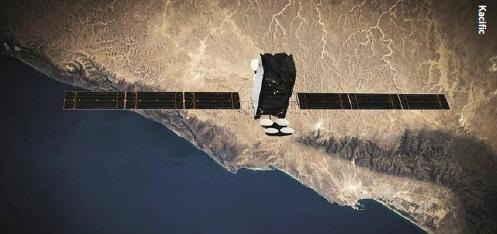 The emergence of HTS has revolutionised the communications landscape, delivering significantly more capacity than traditional fixed-beam satellites.
The emergence of HTS has revolutionised the communications landscape, delivering significantly more capacity than traditional fixed-beam satellites.
The simulation revolution
The emergence of high-throughput satellites (HTS) has revolutionised the commun-ications landscape
The space environment presents unique challenges that are difficult and expensive to replicate on Earth, but modern simulation tools can recreate the harsh space environment virtually, testing how materials and components will respond to radiation, thermal cycling and mechanical stresses before any hardware is built. The cost of ground testing and the limitations of Earth-based test facilities make simulation an essential tool for satellite development.
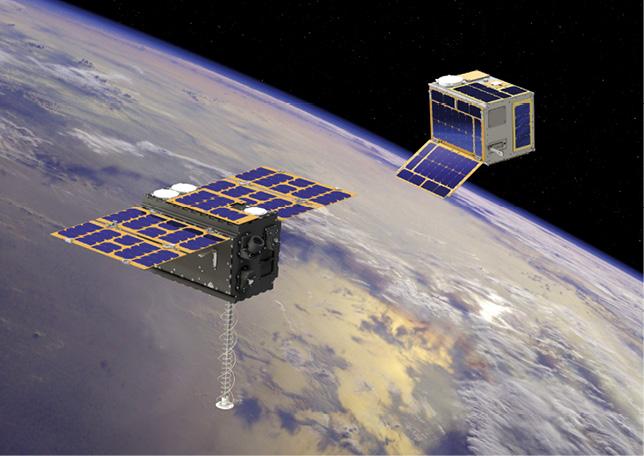 ESA’s LEO-PNT (low Earth orbit Positioning Navigation and Timing) in-orbit demonstrator mission features a constellation of 10 satellites plus two spares that will fly in LEO to test innovative signals across various frequency bands. Its goal is to advance satellite navigation concepts for resilient positioning and timing services. Launch of the first two LEO-PNT satellites is planned from the second half of December 2025 on a Rocket Lab Electron launcher vehicle from New Zealand.
ESA’s LEO-PNT (low Earth orbit Positioning Navigation and Timing) in-orbit demonstrator mission features a constellation of 10 satellites plus two spares that will fly in LEO to test innovative signals across various frequency bands. Its goal is to advance satellite navigation concepts for resilient positioning and timing services. Launch of the first two LEO-PNT satellites is planned from the second half of December 2025 on a Rocket Lab Electron launcher vehicle from New Zealand.
Thermal management represents one of the most critical aspects of satellite design. Satellites experience extreme temperature variations as they move between sunlight and shadow, creating thermal stresses that can compromise structural integrity and component performance. Temperature gradients between the illuminated and shadowed sides of a spacecraft can also be extreme. At the same time, sensitive instruments often require a narrow band of temperatures to operate effectively. Thermal simulation tools can model complex heat transfer mechanisms, including conduction, convection and radiation, while accounting for the unique characteristics of the space environment where convection is absent.
Electromagnetic simulation is equally crucial for communications satellites and those carrying sensitive electronic payloads. Engineers must ensure that antennas perform optimally across required frequency bands, that RF interference between subsystems is minimised and that electronic systems remain functional in the space radiation environment. Advanced electromagnetic simulation tools can model complex antenna patterns, predict interference scenarios, optimise RF system performance and evaluate the effectiveness of shielding.
Structural analysis through simulation helps engineers design satellites that can survive the intense mechanical loads experienced during launch whilst remaining stable and precise in orbit. The ability to model dynamic responses, vibration modes and structural deflections enables optimised designs that meet performance requirements whilst minimising mass, a critical constraint given launch cost considerations.
Optical simulation is becoming increasingly important for Earth observation satellites and other platforms carrying precision optical payloads. Engineers can model optical system performance, predict image quality under various conditions and optimise sensor configurations through virtual testing. This includes modelling the effects of thermal variations, mechanical deformations and contamination on optical performance.
Today’s simulation platforms enable integrated workflows that connect thermal, structural, electromagnetic and optical analyses. This systems-level approach allows engineers to understand how changes in one area affect overall satellite performance, enabling true multi-disciplinary optimisation. The ability to perform these analyses early in the design process significantly reduces development risk and cost.
The integration of AI and machine learning into simulation workflows is also enabling new capabilities for design optimisation and performance prediction. AI-driven simulation tools can explore vast design spaces, identify optimal configurations and predict system behaviour under previously unconsidered conditions with orders of magnitude improvements in efficiency.
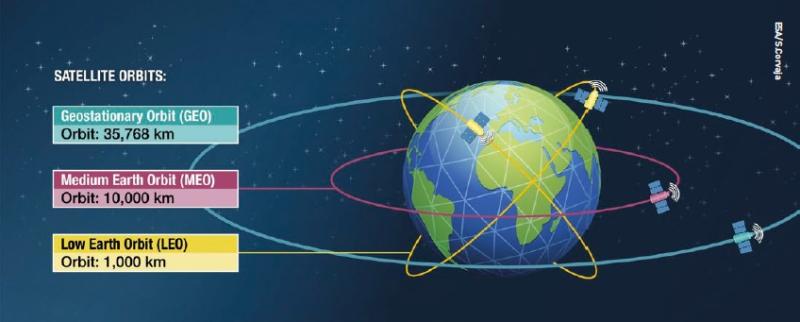 LEO constellations provide low signal delays and frequent revisit rates, while GEO satellites offer persistent coverage and high-capacity communications. Medium Earth orbit (MEO) systems bridge these capabilities, creating layered architectures optimised for specific mission requirements.
LEO constellations provide low signal delays and frequent revisit rates, while GEO satellites offer persistent coverage and high-capacity communications. Medium Earth orbit (MEO) systems bridge these capabilities, creating layered architectures optimised for specific mission requirements.
Security imperatives
The trend towards software-defined payloads enables greater flexibility and adaptability, allowing operators to reconfigure systems in response to changing requirements
As satellites become increasingly integrated into critical infrastructure, security considerations are becoming paramount. Space is no longer a benign environment but a contested domain where satellites face threats ranging from cyber-attacks to physical interference and potential kinetic threats.
The proliferation of anti-satellite capabilities among various nations has heightened awareness of satellite vulnerability. This has driven investment in resilient architectures, including distributed constellations, cross-links between satellites and rapid reconstitution capabilities. The concept of ‘distributed resilience’ is becoming central to satellite system design, emphasising the ability to maintain critical services even when individual platforms are compromised.
Cybersecurity for satellite systems encompasses both space and ground segments. Satellites must be protected against unauthorised access, command spoofing and data manipulation, while ground systems require robust security measures to prevent intrusion and ensure data integrity. The increasing connectivity of satellite systems creates new attack vectors that must be carefully managed through comprehensive security architectures.
The commercial space sector’s rapid growth has introduced new security challenges, as commercial satellite operators must balance accessibility and cost-effectiveness with security requirements, particularly when serving government customers or operating in sensitive regions. Moreover, the dual-use nature of many satellite capabilities creates complex export control and technology transfer considerations.
Engineering tomorrow’s space infrastructure
The future of satellite systems lies in hybrid architectures that combine different orbital regimes, platform types and capabilities. LEO constellations provide low signal delays and frequent revisit rates, while GEO satellites offer persistent coverage and high-capacity communications. Medium Earth orbit (MEO) systems bridge these capabilities, creating layered architectures optimised for specific mission requirements.
Artificial intelligence is transforming satellite operations, from autonomous navigation and collision avoidance to intelligent data processing and anomaly detection. It enables satellites to make autonomous decisions, reducing dependence on ground control and improving responsiveness to changing conditions. Machine learning algorithms can optimise power management, predict component failures and adapt system behaviour to changing environmental conditions.
The integration of AI and machine learning into simulation workflows is also enabling new capabilities for design optimisation and performance prediction
Inter-satellite links are becoming standard features in constellations, enabling data relay, distributed processing and enhanced resilience. These links create space-based networks that can operate independently of ground infrastructure, providing critical capabilities even when terrestrial communications are disrupted. The development of optical inter-satellite links promises even higher data rates and improved security compared to traditional RF links.
The integration of onboard computing capabilities into satellites is enabling real-time data processing and analysis in space. This reduces downlink requirements, enables faster decision-making and supports new applications that require immediate response to detected events. In addition, the convergence of satellite platforms with cloud computing architectures is creating new possibilities for distributed space-based computing.
Satellite communications, PNT and remote sensing form the foundation of global connectivity, precision navigation, real-time situational awareness and resilient space-based infrastructure serving both civilian and defence applications. To maintain these critical capabilities, investments should focus on security, redundancy and interoperability, ensuring that critical data remains accessible, protected and actionable in any operational environment.
The ability to deliver timely, accurate and secure information will be a decisive factor in global competition, shaping the future of military operations, commercial enterprises and everyday life. Simulation software will play an important part in achieving these goals, providing the tools necessary to navigate the complex trade-offs inherent in satellite system design.
Investment in advanced manufacturing techniques, including additive manufacturing and automated assembly, will enable more cost-effective satellite production and shorter development cycles. The development of in-space manufacturing and assembly capabilities could revolutionise how large space structures are built and deployed.
The future of satellite systems lies in hybrid architectures that combine different orbital regimes, platform types and capabilities
In the final analysis, the convergence of expanding mission requirements, technological innovation and sophisticated simulation capabilities is enabling a new generation of satellite systems that support ever-more demanding applications across communications, navigation and Earth observation domains.
The next decade will be crucial in determining whether the satellite industry can meet the growing demands for secure, reliable and affordable space-based services while managing the challenges of an increasingly congested and contested space environment. Through continued innovation, strategic investment and international cooperation, the satellite industry is poised to deliver the capabilities that will define the future of space-based infrastructure.
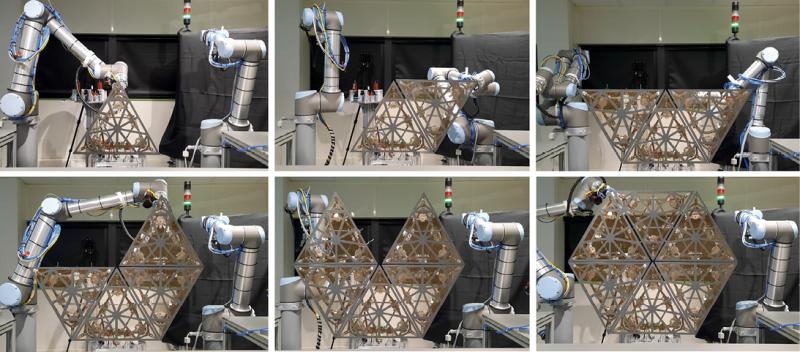 The development of in-space manufacturing and assembly capabilities could revolutionise how large space structures are built and deployed. Currently the size of a satellite is limited by the diameter of the fairing of the launcher. Airbus’ solution is to send kit parts that will be assembled in space using robot arms from their space factory. Initially the parts will be sent from Earth but ultimately the plan is for them to be made from recycled space debris.
The development of in-space manufacturing and assembly capabilities could revolutionise how large space structures are built and deployed. Currently the size of a satellite is limited by the diameter of the fairing of the launcher. Airbus’ solution is to send kit parts that will be assembled in space using robot arms from their space factory. Initially the parts will be sent from Earth but ultimately the plan is for them to be made from recycled space debris.
About the author
Dr James (Jim) Woodburn is responsible for the development, verification and enhancement of algorithms related to orbit determination, orbit dynamics, re-entry prediction and visibility computations in Ansys Government Initiative’s (AGI) software. Jim has worked in the field of satellite dynamics and operations since 1986. He holds three US patents and he has presented numerous technical papers at industry conferences. As a recognised expert in orbit determination, Jim also participates in industry peer reviews and provides operational support for programs using AGI’s flight dynamics tools. Jim has a BS degree in aerospace engineering from the Pennsylvania State University and a PhD in aerospace engineering from the University of Texas at Austin.





